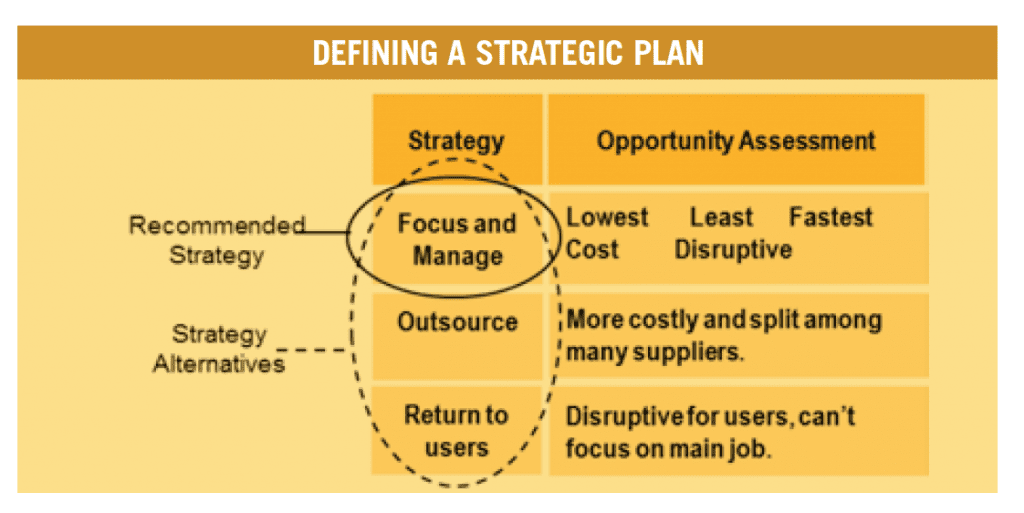Although a must, strategic plans are often absent in fleet management.
A properly written strategic plan can differentiate the fleet manager as a trusted and valued supplier of high quality services, instead of just another internal department that provides indifferent service.
Strategy is a word that is misused in many organizations. “Strategy” is part of everyday business language and is often used in the wrong context. “Operational Excellence” is not strategy. It’s a goal. A strategic plan with multiple strategies is misusing the word “strategy” (describing which way) when it is really describing “tactics” (how to do it). It is important not to confuse the terms “strategy” and “tactics.”
Start with a description
A strategic plan starts with a description of the situation. This description should identify the most important issues to be addressed, two or three things about the current situation that stand out.
These may be straightforward, such as providing maintenance service after hours, or a shortage of funds for vehicle replacement. Sometimes they are intangible. The biggest issue may be restoring trust and confidence in fleet management, which is not easy to measure.
Usually the objective is to manage fleet assets to enable peak performance in delivery of the organization’s product. It is helpful to remember that the fleet manager’s product is not a car or truck. If the purpose of the fleet is transportation, the product is a trip.
Defining the strategy
In the chart below, there are three different strategies shown in the left-side blocks. One is called “Focus and Manage,” which means keeping the fleet management function in place and making it work better. For this article it is assumed that this is the recommended strategy.

Another strategy is to outsource fleet management to another organization, and not have an internal position for fleet management. The third strategy is to eliminate a centralized fleet management function and let those parts of the organization that use vehicles take this on, on their own.
Potential outcomes
The right-side blocks contain an assessment of what the outcome of each strategy will be. In this case, “Focus and Manage” will likely have the lowest cost, if it is already in place. If the existing resources are kept in place, this will be less disruptive for users. In many cases, it is likely the fastest way to reach the objective.
Outsourcing to another organization is an option that has been available for many years. If it means terminating the employment of a large number of staff, there will be labour relations issues to deal with. Although single-source solutions have started to appear, for some fleets it may mean using more than one supplier.
The third option, “Return to Users” may be appealing to those who have lost confidence in the existing fleet management function. In some situations it may be more efficient to do this. Transit operations in a municipality would be one example. But for other users this will just be another distraction from their core purpose.
It is common to see replica fleet management functions pop up as users grasp the implications of paying insufficient attention to this task. In the next issue I will complete the strategic plan by describing some of the tactics that can be used to carry out the strategy and reach the objective.



